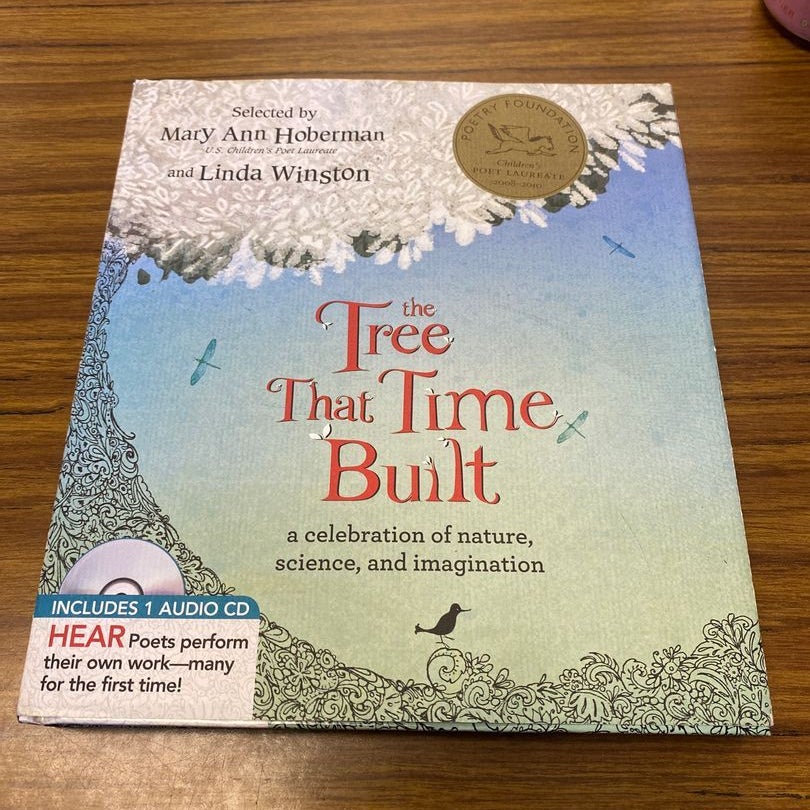Amidst the ceaseless march of time, wherein the sands of the hourglass are perpetually shifting, expectant minds often ponder the interplay between the past and the future. This contemplative dichotomy becomes a fertile ground for literature, particularly in the realm of children’s poetry. “The Tree That Time Built,” authored by the illustrious Mary Ann Hoberman, encapsulates these reflections with an eloquently woven tapestry of verse. The anthology promises not only to engage children but also to invoke deep-seated musings about the cyclical nature of existence and the prospects that lie ahead. Herein, we will delve into the intricacies of this remarkable work, exploring its thematic nuances and the ways it beckons readers to envision the future.
The very title of the anthology—“The Tree That Time Built”—evokes a powerful metaphor. Trees, often symbolizing growth, longevity, and regeneration, parallel the unfolding narrative of time. As children engage with this literary piece, they are invited to observe how each poem functions like a ring within a tree trunk; each ring chronicles a year, encapsulating moments in time that hold significance. Yet, the anthology transcends the mere passage of time. It captures the essence of evolution, encouraging emerging minds to envision what lies beyond the present.
Illustrative of Hoberman’s prowess is the structural composition of the anthology. The harmonization of poetic forms—ranging from rhythmic chants to fluid free verse—allows for an immersive reading experience. Each poem conjures vivid imagery, enchanting the imagination with a kaleidoscope of colors and sounds. Children are gently lured into a realm where the whimsical dances with the philosophical, where the mundane is imbued with the extraordinary. Such an approach not only captivates young readers but also encourages them to engage with the text, nurturing a profound appreciation for the art of poetic expression.
At its core, “The Tree That Time Built” serves as a poignant reminder of the fleeting moments that encompass childhood. The poems evoke nostalgia, drawing upon the shared experiences of growth—such as losing a first tooth, the exhilaration of a summer thunderstorm, or the bittersweet sensation of leaving a beloved toy behind. This emotive resonance is crucial, as the journey toward adulthood is fraught with transitions. By encapsulating these experiences within verse, Hoberman equips her readers with the vernacular to articulate their own feelings of joy, confusion, and wonder.
Moreover, the anthology invites contemplation about the future. What does tomorrow hold? The poems harness a sense of wonderment, encouraging young minds to ponder their aspirations, fears, and the inevitable changes that accompany maturation. For instance, one might encounter verses that whisper about the stars, igniting a desire within the child to dream ambitiously, to yearn for the limitless skies that beckon. The articulation of aspirations within these poems can galvanize young readers to forge their own paths, to explore the boundless possibilities that lie ahead.
As educators and caregivers seek resources that foster both literacy and emotional intelligence, “The Tree That Time Built” emerges as an essential inclusion on the shelf of any burgeoning library. The anthology’s multifaceted themes serve as springboards for discussions on time, growth, and the myriad futures that await. Teachers can utilize specific poems to ignite classroom conversations regarding future aspirations; children can share their dreams, all while developing their analytical prowess through poetic interpretation.
The illustrations accompanying Hoberman’s masterful verses further enhance the narrative’s vitality. Each visual component serves not merely as decoration but as a complement, amplifying the themes embedded within the poems. The artistry captures the essence of youth and the whimsicality of childhood fantasies, effectively bridging the gap between text and visual storytelling. Here, young readers are afforded the opportunity to engage with the material holistically, harnessing both linguistic and artistic comprehension.
In the grander scheme, “The Tree That Time Built” functions beyond a mere collection of poems; it is an ode to the intrinsic relationship between time, nature, and the human experience. The anthology encourages readers to reflect on their place within this continuum, prompting an awareness that extends beyond the immediate to the prospective future. Every poem beckons the reader to consider not only how they relate to the world around them but also how they can shape their own destinies.
In conclusion, “The Tree That Time Built” stands as a verdant beacon on the shelves of literature, radiating a promise of reflection and inspiration. Mary Ann Hoberman’s engaging poetic styles interlaced with contemplative themes position this anthology as a crucial resource for fostering literacy and emotional growth among children. Ultimately, readers are left to ponder the interconnectedness of their past and present as they gaze toward the horizons of their futures. Through the lens of Hoberman’s work, children are not merely passive observers of time’s passage; they are invited to become active participants in the narrative of their own lives. Every turn of the page signals yet another opportunity to dream, explore, and, above all, build their own trees of time.”









Leave a Comment